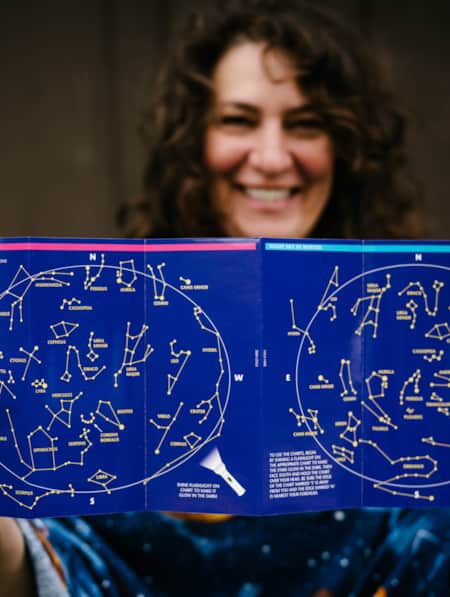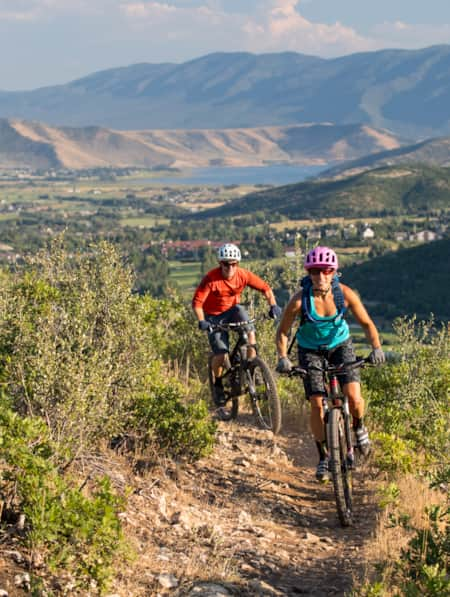Historic Heber: 4 Spots Where You Can Journey to the Past
Embracing history and heritage in Heber Valley.

In recent years, Heber Valley — anchored by the towns Heber and Midway — has evolved from sleepy ranching and farming communities into a bustling, year-round destination, teeming with outdoor recreation, independent restaurants and a pleasantly coexisting mix of residents and visitors. (Read: Swiss Traditions Meet Mountain Adventure in Utah's Heber Valley)
But once you visit, it’s apparent that something about the place is different. That "something" is how earnestly the community honors its heritage while embracing its future. Following are four reasons why the Heber Valley is not only an apt representation of Utah’s roots, but of historic Americana as well.
Swiss Days Festival
Friday and Saturday, Labor Day weekend, First North and Main Street, Midway
When you stand in the center of Midway’s town square and look up, you’ll quickly recognize how the area’s verdant lowlands and towering snow-capped mountain peaks might have reminded early Latter-day Saint emigrants of the European Alps.
Around the same time the valley was being settled, the Church of Jesus Christ of Latter-day Saints was establishing missionary work in Europe. When some early Swiss converts immigrated to Utah, they were drawn to the green mountain valley that reminded them of home. The bucolic Heber Valley was also attractive as it was close to Salt Lake City’s commercial, social and religious centers.
The influence of those early Swiss residents remains close in Midway, from its still-standing, pioneer-built pot-rock homes and town hall (circa 1941) to the descendants who still make their homes in the valley. That heritage shines brightly during Midway Swiss Days, an annual two-day celebration highlighted by Swiss-German food, music, and dancing. The festivities began in the 1940s as a farmer’s market where local growers gathered to sell crop overages they couldn’t offload in Salt Lake City. Music and dance were soon added to the events.
Today’s Swiss Days includes glimmers of the original small-town feeling. "Everything sold at Swiss Days has to be handmade,” says Aja Phillips, a festival committee member. But now more than 80,000 visitors pack Midway’s town square and surrounding areas for the party. (To put that number into perspective, just over 73,000 people attended Burning Man in 2023.)
Swiss Days provides an ample economic boost for local businesses during the festival weekend. Yet proceeds also fund ongoing beautification and philanthropic causes, including Midway’s annual flower planting, Christmas light display and student scholarships. "Swiss Days is now much more about service to the community," Phillips says. "Simply put, it’s a town party to celebrate the town’s residents and our heritage."
"Swiss Days is now much more about service to the community. Simply put, it’s a town party to celebrate the town’s residents and our heritage."
– Aja Phillips, Midway Swiss Days Festival Committee
Heber Valley Railroad
450 S. 600 West, Heber City
Riding the Heber Valley’s signature railroad — the only heritage railroad in operation in Utah — feels very much like traveling the short-line passenger railways found across the country in the 1880s to 1920s (Read: Luxury and Legacy on Utah's Railways). Today’s Heber Valley Railroad trains feature expertly refurbished engines, passenger cars and a caboose that take riders on scenic and themed rides through the valley, along the shores of Deer Creek Reservoir, and down Provo Canyon to Bridal Veil Falls. The Heber Valley Railroad also offers popular themed rides, such as the Chocolate Lovers Train, Rock N’ Roll Train, Easter Bunny Train and its marquee-themed experience, the Polar Express.
Its history began on a late-September day in 1899 amid great fanfare when the last spike of the Rio Grande Western’s Provo Canyon Branch was ceremoniously driven into the rails in front of the Heber Depot. Excitement for the new rail line was certainly understandable. It reduced to two hours what had previously been a rough, three-day journey by horse-pulled wagon from Heber to Provo — and often days longer in the winter. The line offered a much more reliable connection between the then-remote valley and the rest of the world.
Passenger ridership on the Provo-Heber City line remained strong until the rise of the automobile in the 1920s and 30s. The line’s freight traffic persisted through World War II, but then slowly declined as trucks became the preferred method to transport livestock, milk and cream from the valley to the Wasatch Front.
Soon after service was abandoned in 1968, area train enthusiasts launched the Wasatch Mountain Railway, operating what was called “the Heber Creeper” until 1990. In 1992, the Utah State Legislature allocated funding for the Heber Valley Historic Railroad Authority, this time under the moniker Heber Valley Railroad.
Huber Grove, Wasatch Mountain State Park
1500 Warm Springs Road, Midway
Within the sweeping Wasatch Mountain State Park, located at the mouth of Snake Creek Canyon, is a small but venerable pot rock home and creamery. The dwelling belonged to Johannes and Maria Huber, who met and married after they had both emigrated from Switzerland. In 1878, they settled in the Heber Valley on an 160-acre homestead. In addition to the home and creamery, they built a large barn, corrals, chicken coops, a pigsty, a smokehouse and a granary.
The Huber home became the centerpiece of the mostly Swiss settlement, where residents and visitors alike would congregate, exchanging daily news from home while sharing an apple or two from one of the Hubers’ three nearby orchards. The community was incorporated as Midway in 1891.
In 1961, the Huber homestead orchards and buildings became a part of Wasatch Mountain State Park, one of Utah’s first state parks and now one of its largest. What remains of the original homestead — the pot rock home and creamery, the lawn and surrounding orchards — is now known as Huber Grove. Visitors can picnic, birdwatch, stroll or snowshoe along a nature trail looping through the nearby Aspen forest. A self-guided walking tour is furnished with 27 interpretive signs featuring the Hubers’ poetry and journal excerpts.
On Saturdays and Sundays in the summer and fall, Wasatch Mountain State Park staff offer free guided tours of Huber Grove’s grounds and buildings. To register for a tour, call the Visitor Center at 435-654-1791, or make a reservation online.
Antique & Classic Power Museum
50 Starks Lane, Wallsburg
“My dad was a teenager in the 1950s and spent a lot of time then fixing cars and riding bikes,” says Pam Williams, daughter of Richard W. Erickson, and one of seven trustees of her father’s Antique & Classic Power Museum in Wallsburg. “He was a factory hillclimber for a Harley-Davidson dealer in Minnesota and spent a lot of time participating in hill climbs in Wisconsin. Back then, he was like the Fonzie of Litchfield, Minnesota.”
Following a career in the military, Erickson and his wife, Rita, relocated in the late 1960s from the Upper Midwest to Utah to start a construction company. In 1972, he purchased 350 acres in upper Provo Canyon just outside of Wallsburg, “thinking he’d store tractors on it,” Williams says. The land soon became a repository for Erickson’s passion: power engines. In 1999, Erickson started a foundation and, over the following years, slowly developed his collection and the property into a museum.
The Antique & Classic Power Museum now encompasses 23 buildings housing an array of antique vehicles. The museum includes Erickson’s more than 150 motorcycles dating to the 1900s, a collection of dozens of classic cars, 120 farm tractors, and a belt-driven sawmill. The museum also features a pioneer village that includes a church with a functioning pump organ, 1800s-era log cabins, historical replicas of small shops and stores and the original Erickson family home, moved to the site from Minnesota.
The Antique & Classic Car Museum is open May through October by appointment only, bookable on the museum's website. The museum also hosts three events annually: the Antique Power Show, held the weekend after Father’s Day; TedFest, a multiday, family-friendly roots-based music festival held in mid-July; and Boomerfest, a classic rock music festival held the last weekend of August.

The Antique & Classic Power Museum encompasses 23 buildings housing an array of antique vehicles.
Photo: Courtesy of Antique & Classic Power Museum

The museum includes Erickson’s more than 150 motorcycles dating to the 1900s, a collection of dozens of classic cars, 120 farm tractors, and a belt-driven sawmill.
Photo: Courtesy of Antique & Classic Power Museum
Nearby Parks & Forests
-

Deer Creek State Park
Just a short drive from Provo, Park City and Salt Lake City, Deer Creek State Park and Reservoir offers playful summer days filled with boating, fishing and watersports.
-

Jordanelle State Park
Jordanelle State Park is an ideal spot for Utah stand-up paddleboarding but also offers hiking, mountain biking, boating and more. Check it out!
-

Wasatch Mountain State Park
Year-round family adventure awaits. In the warmer months, hit the hiking or biking trails, or reserve a tee time at the golf courses. In the winter, ski or snowmobile through the alpine terrain.

















